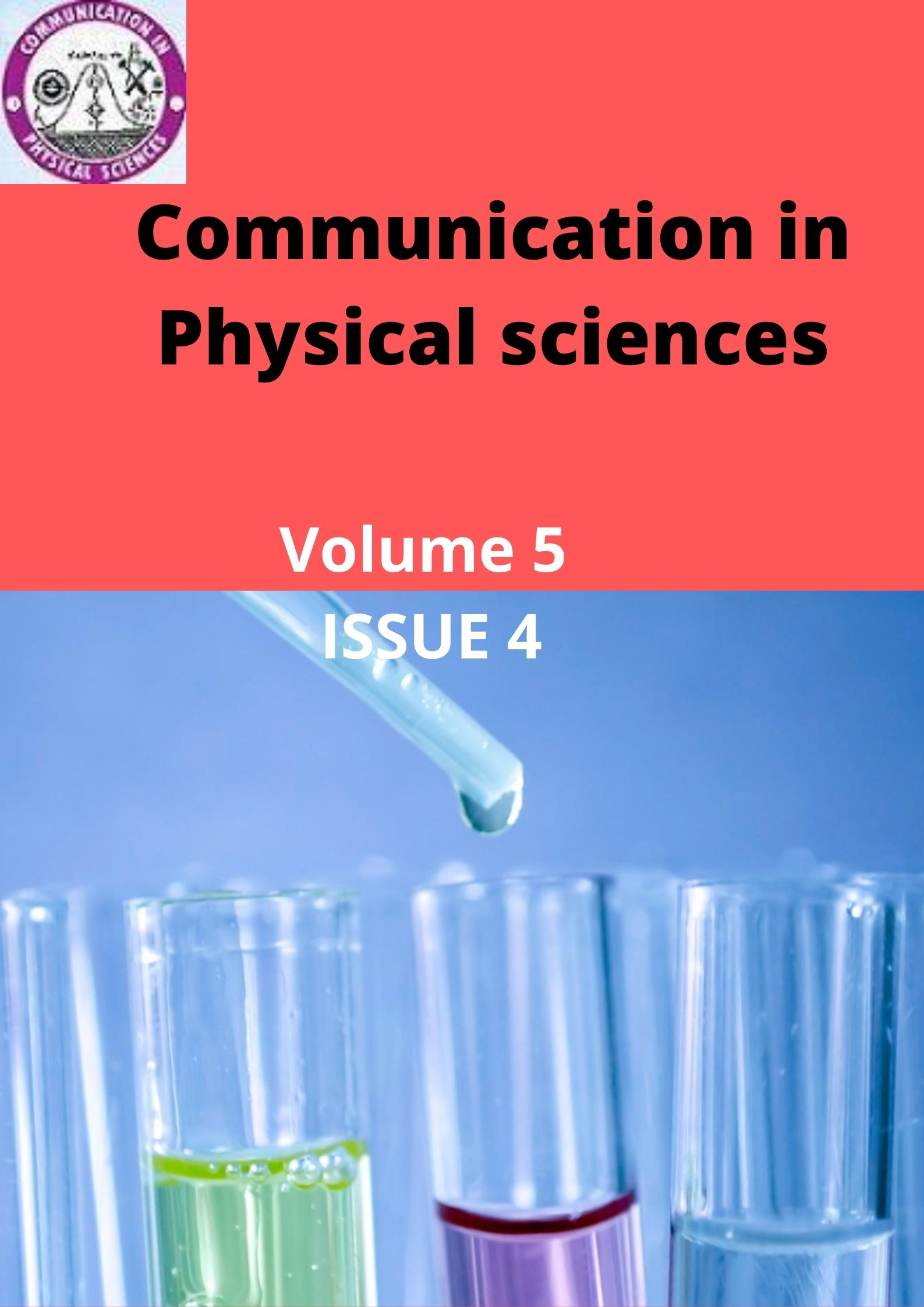Computational Chemistry studies of some cyano(3-phenoxyphenyl) methyl isobutyrate derived insecticides and molecular design of novel ones
Keywords:
Insecticides, toxicity, design of isobutyrate derived insecticidesAbstract
This work was designed to study some isobutyrate derived insecticides (using computational chemistry) and to designed novels ones using quantitative structure activity relationship (QSAR) model. PM 7 quantum chemical descriptors were calculated for cyhalothrin (CYH), fenpropathrin (FEP), cypermethrin (CYP), deltamethrin (DEL), permethrin (PEM) and cyfluthrin (CYF). Calculated descriptors were frontier molecular energies (including the energy of the highest occupied molecular orbital (EHOMO), the energy of the lowest unoccupied molecular orbital (ELUMO) and the energy gap (DE)), the binding energy (EBind), the electronic energy (EElect), the hydration energy (EHyd) and logP. Those descriptors that exhibited excellent correlations with the experimental LD50 values (of the studied insecticides) were used to derive quantitative structure activity relationship (QSAR). Correlation between the theoretical and experimental LD50 values was excellent (R2 = 0.9500). The active sites of reactivity for the insecticides were identified through Fukui function analysis and were supported by their HOMO and LUMO diagrams. Based on the derived quantitative structure activity relationship, eleven (11) novel insecticides were designed and their theoretical activities (which ranged from 1319 to 5630 mg/kg) were comparable and better (in some cases) to the known insecticides. Therefore, quantitative structure activity approached can be effective in molecular design and modelling of insecticides
Downloads
Published
Issue
Section
Most read articles by the same author(s)
- Patricia Ese Umoru, Femi Emmanuel Awe, Joseph Ifeanyi Uche, Oluwayemi Abiodun Babatunde, Ibrahim Aliyu Salaha, Investigation of the Adsorptive And Inhibitive Properties Of Cucurbita Maxima Peel Extract And Halide Ions As Inhibitors For Stainless Steel in 1m H2so4 Solution , Communication In Physical Sciences: Vol. 10 No. 2 (2023): VOLUME 10 ISSUE 2
- Femi Emmanuel Awe, Muhammad Dahiru Faruruwa, Hadiza Abba, Green Synthesis, Characterization and Antibacterial Activity of Zinc Oxide and Titanium Dioxide Nanoparticles Using Terminalia Catappa and Cymbopogon Citratus Leaf Extract , Communication In Physical Sciences: Vol. 7 No. 4 (2021): VOLUME 7 ISSUE 4
Similar Articles
- Sirajo Ibrahim, Yunusa Idris, Effect of Using Fabricated Motor Generator Device in Teaching Energy Concepts on Basic Science Students’ Achievement of Zamfara Central Education Zone , Communication In Physical Sciences: Vol. 10 No. 3 (2023): VOLUME 10 ISSUE 3 (2023-2024)
- Adams, Abiodun Emmanuel, Comparative Study of the Proximate Analysis of Shea Butter Seed (Vitellaria paradoxa) Across three Different Locations in the Savanna Region of Nigeria , Communication In Physical Sciences: Vol. 10 No. 3 (2023): VOLUME 10 ISSUE 3 (2023-2024)
- Kantoma, Dogara , Nwokem, Calvin Onyedika, Zakka Israila Yashim, Zaharaddeen Nasiru Garba, Green Synthesis of Silver Nanoparticles(AgNPs) using Calotropis procera Leaves Extract and it Adsorption Properties for the Removal of Cr3+ from Petroleum Waste Water , Communication In Physical Sciences: Vol. 10 No. 3 (2023): VOLUME 10 ISSUE 3 (2023-2024)
- Onanuga Omotayo Aina, Titus Morrawa Ryaghan, Bello Musa Opeyemi, Momoh Daniel Clement, Goat Horn Biochar as a Low-Cost Adsorbent for the Removal of Cadmium and Zinc ions in Aqueous Solution , Communication In Physical Sciences: Vol. 10 No. 3 (2023): VOLUME 10 ISSUE 3 (2023-2024)
- Nwoke Linda Chinyere, Uchenna Igwe Okenwa, Onuchi Marygem Mac-Kalunta, Johnbull O. Echeme , Uyanwa Maryjane Nkeiruka, Phytochemical screening and wound healing studies of Chromolaena odorata , Communication In Physical Sciences: Vol. 11 No. 2 (2024): VOLUME 11 ISSUE 2
- Felicia Ndidi Ejiah, Tolulope Mojisola Fasina, Neerish Revaprasadu , Folasade Tolulope Ogunsola, Oluwole Babafemi Familoni, Investigation of Some Novel Schiff Base Copper(II) Complexes of 2-aminophenol and ortho Substituted Benzaldehydes as Potential Antiseptic Agents , Communication In Physical Sciences: Vol. 11 No. 2 (2024): VOLUME 11 ISSUE 2
- Samuel Awolumate, Aderonke Nana Agbo, Nutrient Retention and Feed Utilization Efficiency in Clarias gariepinus: The Role of Lysine and Methionine in Enhancing Protein Deposition and Reducing Nitrogen Waste , Communication In Physical Sciences: Vol. 12 No. 3 (2025): VOLUME 12 ISSUE 3
- Ayomiposi Sodeinde, Oluwafemi Orekoya, Daniel Jayeoba, Oyebade Adepegba, Effect of Green Information and Communication Technology on Survival of Electricity Distribution Companies in Nigeria , Communication In Physical Sciences: Vol. 12 No. 3 (2025): VOLUME 12 ISSUE 3
- Isonguyo Michael Ukpong , Emmanuel Wilfred Okereke, Inverse Cube Root Transformation: Theory and Application to Time Series Data , Communication In Physical Sciences: Vol. 12 No. 3 (2025): VOLUME 12 ISSUE 3
- Blessing Ebong, Review on Microplastic-Polymer Composite Interactions: Assessing Contaminant Adsorption, Structural Integrity, and Environmental Impacts , Communication In Physical Sciences: Vol. 12 No. 3 (2025): VOLUME 12 ISSUE 3
You may also start an advanced similarity search for this article.




